Poker has been around for almost two centuries. It is also very competitive, featuring many high-stakes tournaments with million-dollar prize pools. These two factors combine to give poker strategy a lot of depth. Over the years, people have developed numerous techniques and skills to help them win more. These can range from observing prevalent habits and mistakes your opponents make, to accurately guessing which cards your opponents hold. This poker guide will cover proper betting, which is necessary for every promising poker player. Specifically, it will focus on one of poker’s most well-known deceptive plays: The check-raise.

Check-raising explained
If you are an experienced poker player, you have probably seen the check-raise in action, and you may have even performed it yourself. A check-raise is when you check on your initial action, but if someone after you bets, you raise it. That is a notorious move that is even seen as “dishonest” or outright banned in some casinos. It is a deceptive play because your initial check puts opponents into a false sense of security, making them think your hand is weak or on a draw. Then, after they bet to try and exploit this, your raise puts them in a problematic situation since their bet is now “locked” in the pot.

The advantages of check-raising
There is a good reason for check-raising’s reputation. It has numerous benefits and is essential to every good player’s arsenal. Check-raising puts a lot of pressure on your opponents, as what they once thought was a weak hand that is easily bluffed becomes a dangerous hand that is now raising them. This pressure is excellent for both bluffing and value. Check-raising also serves as a way of balancing your range and becoming more unpredictable. By including more check-raises, you make sure your checking range does not only have weak hands. Finally, check-raising negates the information advantage you get from having a good position. The fact you checked is no longer good information since you raised afterward.
Check-raising for value
Value check-raising is usually a better option for beginners. As a beginner, you generally want to play tight and stick to your best hands. When you get these premium hands, you need to be able to build a big pot and then take it down. That is where value check-raises come into play. Checking shows weakness, meaning your opponents will want to bet with a wider variety of hands. That is precisely what you want, as you can then raise to trap their bet. If they fold, you still manage to get their bet, and if they call, the pot increases dramatically.
You will want to consider a few things when check-raising for maximum value. The first is your opponents’ playstyles. You want them to be aggressive and bet into your check; otherwise, they may also check and ruin the check-raise. You also want them to be loose, as a tight player is likely to have a hand as strong as you, while looser players are much more likely to bet with weaker hands that you are confident in beating. The bet must also be appropriately sized, not too large, or your opponents may fold. You also need to act first. Unlike almost every other poker strategy, a check-raise requires you to be out of position. That makes you look more exploitable, which is what you want so that they will bet into you. Finally, you also want to consider how many opponents you are playing against. In multiway pots (pots with 3 or more active players), check-raising can get you more value because of the many players.
Check-raising to bluff
Check-raising can also be used as a bluff because of how powerful the technique is. You must be mindful that things differ from check-raising for value because they are complete opposites. Your bet sizing should be larger, as you want your opponent to fold, not call. Aim for a minimum of twice the original bet. For playstyles, tighter opponents will fold more often, but looser opponents will likely play more weak hands. Both can be good for you; you must analyze their playstyle and the game state properly.
For example, if you attempt to check-raise in a later round like the turn or river against a tight player, it is doubtful they will fold. That is because they are unlikely to make it to a round that late in the first place if they do not have a great hand. Check-raise bluffs are also less effective in multiway pots, as the chance of someone having a solid hand increases with each player. Finally, check-raises are often better as semi-bluffs. That is when you bluff with a drawing hand instead of complete air because your hand has the potential to improve in later rounds. Even if your bluff is called, you will be ready to claim a large pot if you hit one of your outs.

How to practice check-raising
We hope this article taught you a lot about check-raising and proper betting. This is an essential part of how to play poker since you need to know how to make the most out of your poker hands, good or bad. The best way to improve at poker is to practice, and one of the best ways to practice is playing online poker on GGPoker, the world’s largest poker room. There are many reasons this is good for learning. You can play many games at once, giving you more experience in less time. GGPoker also offers free access to poker tracking software, which is invaluable for analyzing the playstyles of you and your opponents.


